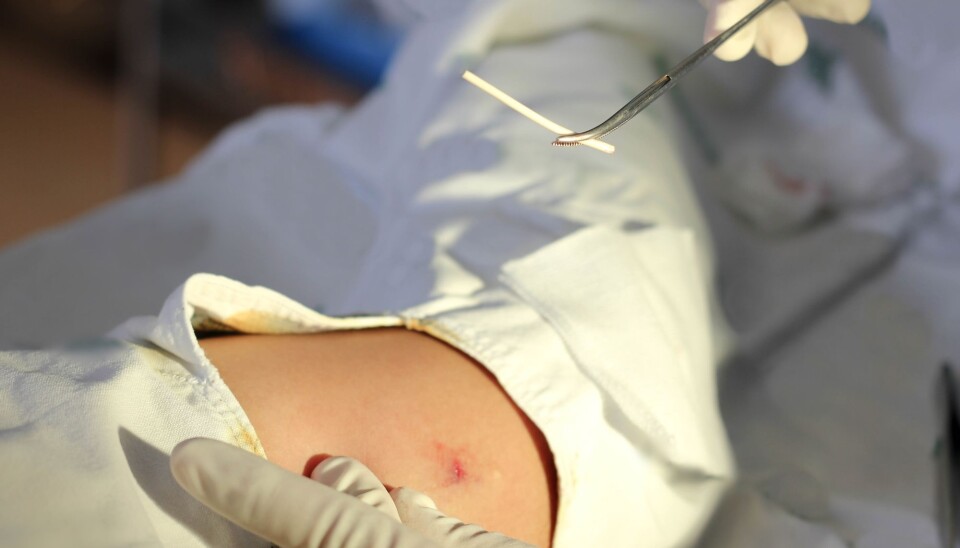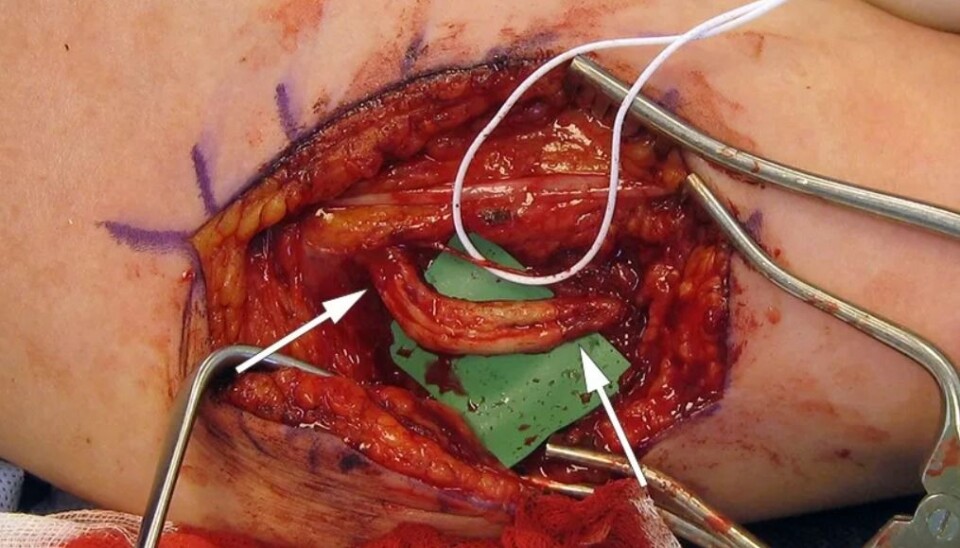
Patients suffered severe nerve injury after removal of their contraceptive implants
Doctors warn that a hand surgeon should be called in if the procedure appears to be difficult.
“Our Hand Surgical Unit has treated two young women for serious injuries to the ulnar nerve sustained during removal of contraceptive implants”, write several orthopaedists at Oslo University Hospital in a recently published article in Tidsskriftet for Den norske legeforening (Journal of the Norwegian medical association - link in English).
The women in question had slender upper arms and had a contraceptive device called Nexplanon implanted in their arm. Nexplanon is the only contraceptive implant available in Norway.
One patient had severe pain in her upper arm and down to the little finger side of her hand. This is the path of the ulnar nerve, which runs along that side of the forearm. The patient had suffered an ulnar nerve injury.
The patient’s implant was removed when it could no longer be identified by touching the patient's skin. The pains started after this removal.
If at any time the implant cannot be found by touch, it should be located and removed as soon as medically appropriate, according to Nexplanon's safety information.
Examinations showed that the removal of the implant had not gone well. The patient had suffered a major ulnar injury with damage to the middle part of the upper arm. The patient experienced severe radiating pain when the doctors tapped on her upper arm.
The patient required surgery to have sections of her ulnar nerve replaced by a nerve graft.
The other woman who is the subject of the article lost mobility in her little finger and ring finger. During examinations one and a half months after removal of the contraceptive device, surgeons discovered a sensory nerve and a blood vessel attached to scar tissue on the ulnar nerve.
Three years after the procedure, the patient still has reduced grip strength and ability to feel and pick up tactile signals.

Contraceptive implant use increasing in Norway
According to the Norwegian Prescription Database, 28 298 Norwegians used a contraceptive implant in 2020.
A total of nearly 346 000 women used contraceptives in 2020, according to the Database, not including IUDs and vaginal rings.
Contraceptive implants and hormonal IUDs only contain a progestogen, and are thus not associated with an increased risk of blood clots.
According to the Scandinavian health website NHI.no (link in Norwegian), research has shown the risk of becoming pregnant with the contraceptive implant to be approximately zero within the treatment period.
More competent therapists
The surgeons behind the article do not believe that the use of birth control implants is a problem. They point out that cases of nerve damage associated with the implant are few, and that those that do occur happen when nerves are pulled during removal of the implant.
Their point is that health professionals must be careful when inserting the implants. When it is difficult to feel the contraceptive device, they should call in a surgeon who is experienced in working close to nerves and blood vessels.
This referral is often made too late, according to the surgeons. They believe that the hand surgery department should be contacted more quickly to reduce the risk of a potential nerve injury.
Translated by: Ingrid P. Nuse
Reference:
Rasmus Dehli Thorkildsen, Frode Thu, Lars-Eldar Myrseth and Magne Røkkum, Major nerve injury in association with use of contraceptive implants, Journal of the Norwegian Medical Association, 15 April 2021. doi: 10.4045/tidsskr.20.0806
———
































